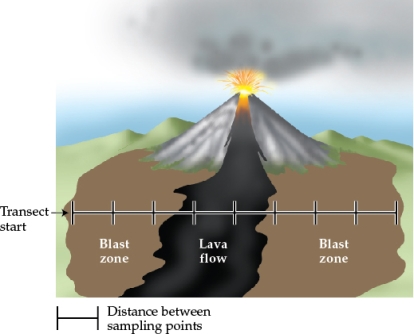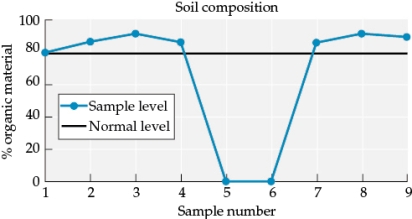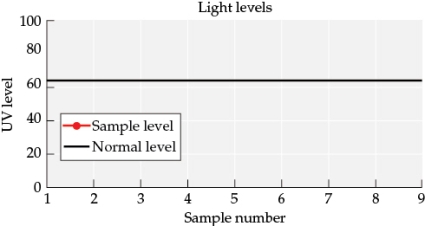Essay
Refer to the figures.
Figure 5
 Figure 6
Figure 6
 Figure 7
Figure 7
 You are studying the impacts of a volcanic eruption that produces a lava flow that covers part of a grassland (Figure 5). You begin taking samples as soon as the area is safe to work in-about one year after the main eruption has ended. You set up a transect (beginning at "Transect start" in Figure 5), and then collect data on how several abiotic and biotic factors vary across it (Figures 6 and 7).
You are studying the impacts of a volcanic eruption that produces a lava flow that covers part of a grassland (Figure 5). You begin taking samples as soon as the area is safe to work in-about one year after the main eruption has ended. You set up a transect (beginning at "Transect start" in Figure 5), and then collect data on how several abiotic and biotic factors vary across it (Figures 6 and 7).
-Answer the following questions:
a) According to the data in Figure 6, what was the effect of the eruption on the percent of organic material in the soil along the transect?
b) Based on Figure 5, predict how the eruption would have changed the amount of UV reaching ground level along the transect. Graph your prediction (this will be referred to as Figure 8).
c) Based on the available resources, what type of succession would you expect along the transect? In both the blast zone and lava flow areas, how extreme are the conditions faced by the colonizer species? How would you expect the extent of extreme conditions to limit the species that could potentially colonize the areas?
Correct Answer:

Verified
a) After the eruption, along the transec...View Answer
Unlock this answer now
Get Access to more Verified Answers free of charge
Correct Answer:
Verified
View Answer
Unlock this answer now
Get Access to more Verified Answers free of charge
Q7: Which statement about succession in the glaciers
Q8: The final theoretical stage of succession is
Q9: Refer to the figure.<br>Figure 10 <br>
Q10: In the dunes near Lake Michigan studied
Q11: Refer to the figure.<br><img src="https://d2lvgg3v3hfg70.cloudfront.net/TBO1115/.jpg" alt="Refer to
Q13: Sutherland's experiments showed that the capacity of
Q14: Refer to the tables and the figure.<br>
Q15: Refer to the figure.<br>Figure 10<br> <img src="https://d2lvgg3v3hfg70.cloudfront.net/TBO1115/.jpg"
Q16: Which statement about the amphibians that colonized
Q17: Which manipulation(s) did Bertness and Shumway perform